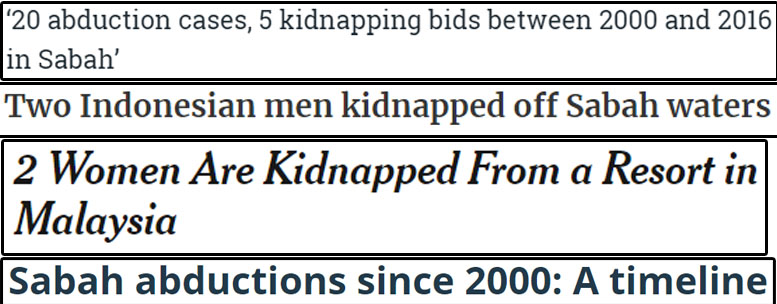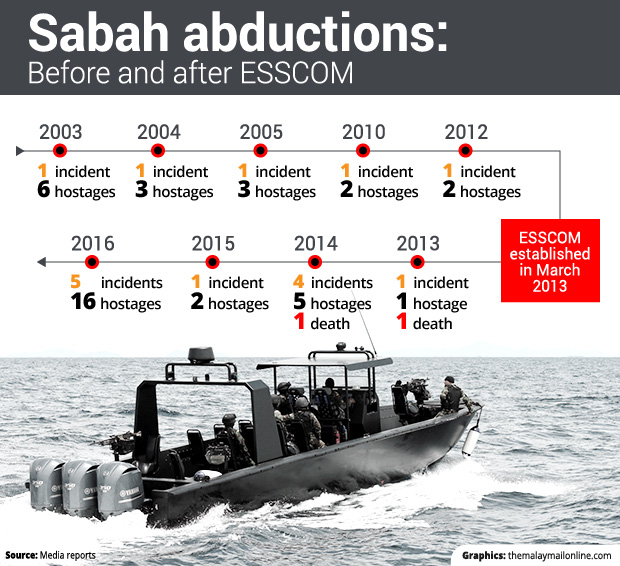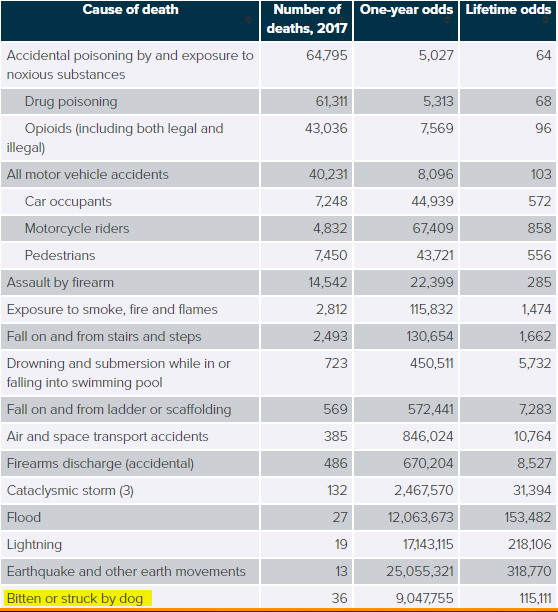The CIA is looking for BM speakers?! Here’s one possible reason why..

- 1.2KShares
- Facebook1.1K
- Twitter9
- LinkedIn8
- Email13
- WhatsApp26
Recently, the CIA released a photo of its banner to recruit Malay-speaking agents to facilitate discussions and negotiations between the US and Malaysia. The recruitment ad followed the intro of a “K” risk list by the US State dept. In April 2019, our foreign ministry urged the US to remove Malaysia from the “K” risk list (no, nothing to do with K-pop or K-drama).
Well, there is actually no “K list” per se, but the US State dept published in a statement on April 9 that it introduced a “K” risk indicator (which identifies kidnapping risks) and hence, updated its travel advisories for 35 countries including Malaysia.

Obviously, these sorts of things aren’t great for tourism, so Malaysia has summoned the US Ambassador to Malaysia to provide clarification on the new advisory and to receive a protest note from the ministry. The ambassador, Kamala Shirin Lakhdir, explained that the US travel advisory categorises each country into 4 levels based on the US govt’s assessment of safety and security.
Most of Malaysia’s okay, but there was special mention made of Sabah.
Terrorist and criminal groups turned the Malaysia-Philippines border into a kidnapping hotspot

When we look at Malaysia’s kidnapping stats on a global scale, we noticed that more of it does happen in the east of Sabah. Data compiled by NYA24 in 2017 and Constellis in 2018 seemed to be pointing at the Malaysia-Philippines border as a kidnapping hotspot, mostly from a militant group known as Abu Sayyaf.
So when was the last case? Well not too long ago actually… In eastern Sabah last December 2018, 2 Indonesians (Heri Ardiansyah and Hariadin) and 1 Malaysian (Jari Abdullah) were kidnapped. Heri got rescued, Jari got badly injured when he was shot in a gunfight while escaping, and passed away a few days later while Hariadin’s life was cut short when he drowned.

Because the problem is so severe in Sabah, the ESSCOM (Eastern Sabah Security Command) was formed to protect Sabah’s east coast from external threats, as we’ve written previously. The same article we wrote also pointed out how the kidnappings haven’t ceased at all since ESSCOM was established in 2013, according to a Malay Mail roundup article, which showed that the number and severity of the kidnapping cases have actually increased.

Despite the criticism from Sabah’s politicians and policymakers, there are no plans to close or suspend ESSCOM. As a matter of fact, ESSCOM is gonna use integrated air ops to improve security there.
“This move is important to help us better monitor our areas of surveillance and identify threats, intrusions and other elements that could disrupt the security and peace of the people in Sabah.” – said Esscom Air Division staff chief Brig Jen Ayub Khan Mohamad Khan.
The number of kidnappings by Abu Sayyaf is indeed quite worrying. However, when it comes to tourists, the last case was a bit longer ago, way back in 2015 with Chinese tourists. Since then, there was also the curious case of Jurgen Kantner a sailor of the open seas who was abducted in 2008 in Somalia. His ransom was paid, but he eventually ended up somewhere between Sabahan and Philippine waters, and was attacked by Abu Sayyaf. His wife died during the tussle, and he was taken, for ransom to the Philippine government. He fell sick, and his captors decided to execute him instead
On a brighter note, a larger scale mass-kidnapping was prevented in 2017, with the death of Abu Sayyaf leader, Muamar Askali.
“They said the death of Muamar Askali and the surrender of the 11 might reduce imminent threats in Sabah waters, although Malaysian security forces are not ruling out the possibility of new kidnap-for-ransom leaders emerging.” – The Straits Times, April 18 2017
However, kidnappings don’t just happen in Sabah …
There were so many cases over the years that the last one was pretty recent
We’re no strangers to breaking news about kidnapping nationwide. We may have heard of the kidnappings of Amri Che Mat, Pastor Koh, Prasana Diksa (Indira Gandhi’s daughter), Pastor Hilmy and Hilmy’s wife Ruth, although these might not be classified as kidnapping much longer.
So when was the last kidnapping case? It was just 3 months ago, before the Magistrate Court witnessed the charging of five middle-aged men for allegedly kidnapping a 57-year-old man in Johor Baru to get a ransom of RM1.8million.

Last year itself witnessed several kidnapping cases, like the one when 2 teenage boys were rescued by the police after being held captive for a RM120,000 ransom. Or when 2 siblings were allegedly kidnapped from their kindie and taken out of the country by their mom (who divorced their dad). Or when 6 men were charged for kidnapping a businessman in Kuantan for a RM19million ransom.
We could go on and on with the listing of cases, but that would take ages because kidnapping has been happening ALMOST EVERY YEAR.

It was frequent enough that a list of some of the children who went missing over the years was compiled. Some of us grew up seeing frequent reports about such kidnappings in the Peninsular. But since the travel advisory is more worried about the threat of kidnappings in eastern Sabah, you may wonder if US citizens should be worried about their likelihoods of being kidnapped or harmed in eastern Sabah..
US citizens might be more likely to die from getting bitten by a dog back home than to be kidnapped in Sabah
Okay, we know that header sounds like we’re exaggerating but hear us out kay. As we could see from Malay Mail’s image on the Sabah kidnappings shown above, the number of kidnappings have been on the rise, albeit in small numbers.
2016 was the highest, with 16 people (rather than the usual 3-5) kidnapped which out of approximately 3 million tourists visiting Sabah means your chances of being kidnapped are at most, 1 in 187,500.
Here’s a list of other things US citizens die of.

So, a US citizen is way more likely to die from dog bites (and everything else on the table) than to be kidnapped in eastern Sabah. This is why the Foreign Ministry said in its press release that the new travel advisory is neither objective nor true since Sabah has been stepping up efforts in protecting peeps there.

Another article we wrote pointed out that although Malaysia has a no-ransom policy, Malaysia has mostly been negotiating with the terrorists to save the kidnap victims, which doesn’t make it any different from countries like France and Germany who claim to be against giving in to the demands of the terrorists but do so anyway.
However, the US has been firm in refusing to negotiate and pay ransoms, so if a US citizen actually got kidnapped in Malaysia, it might be difficult to come to a favourable agreement with terrorists who are probably used to receiving ransoms in this matter of life or death because of the differences in stances. This might lead to a deterioration of diplomatic ties, which is probably the reason behind our placement on the K-list
- 1.2KShares
- Facebook1.1K
- Twitter9
- LinkedIn8
- Email13
- WhatsApp26




